Risk vs odds The terms 'risk' and 'odds' are often used interchangeably but they actually have quite different implications and are calculated in different ways Odds is a concept that is very familiar to gamblers It is a ratio of probability that a particular event will occur and can be any number between zero and infinityThen the natural logarithm of this ratio (or the Log Odds) is evaluated (the Log Odds values are also shown on the Log Odds Table under Log Odds) Note, however, that there might be a problem in the evaluation of the log odds if there are bins with zero positive cases But this problem can be easily fixed with standard techniquesOdds, Logits, Odds Ratios, Log Odds Ratios PD DrGabriele Doblhammer, Fortgescrittene Methoden, SS04 Logistische Regression Alter CD Alter CD Alter CD 22 0 40 0 54 0 23 0 41 1 55 1 24 0 46 0 58 1 27 0 47 0 60 1 28 0 48 0 60 0 30 0 49 1 odds vs odds ratio vs probability Post author Post published Post category Uncategorized Post comments 0 Comments When the

Log Odds Ratio Plot Of Tnt Vs Diagnoses Download Scientific Diagram
Log odds vs odds ratio
Log odds vs odds ratio-The more common the disease, the larger is the gap between odds ratio and relative risk In our example above, p wine and p no_wine were 0009 and 0012 respectively, so the odds ratio was a good approximation of the relative risk OR = 0752 and RR = 075 If the risks were 08 and 09, the odds ratio and relative risk will be 2 very differentLog (Odds of losing) = log (15) = 0176 Figure6 log (odds) on a Number Line Look at that, it looks so symmetrical and a fair comparison scale now So basically using the log function helped us making the distance from origin (0) same for both odds, ie, winning (favor) and losing (against)




Statistics Sunday Everyone Loves A Log Odds Ratio Deeply Trivial
In order to understand a logistic regression, we should first understand several concepts odds, odds ratio, logit odds, and p\൲obability, and the relationships among all the concepts Let's first explain what is odds, and what is probability In logistic對 regression, odds means0 increased risk log OR = 0 no difference in risk log OR <Log Odds Ratio log(θ) θ= 36 Log(θ) =36 θ= 05 Log(θ) =07 θ= 2 Log(θ) = 07 θ= 1 Log(θ) = 0 Odd Ratio Log Odds Ratio
Definition of Odds In mathematics, the term odds can be defined as the ratio of number of favourable events to the number of unfavourable events While odds for an event indicates the probability that the event will occur, whereas odds against will reflect the likelihood of nonoccurrence of the eventFigure 1 log x vs x;Odds Ratios and Log(Odds Ratios) are like RSquared they describe a relationship between two things And just like RSquared, you need to determine if this
The OR for death in ligation group versus sclerotherapy group = 39/81 = 048 This means that the odds of death after ligation is 48% of the odds of death after sclerotherapy, or that ligation decreases the odds of death by 52% as compared with sclerotherapy RELATIONSHIP OF RISK RATIO AND ODDS RATIORisk ratios, odds ratios, and hazard ratios are three ubiquitous statistical measures in clinical research, yet are often misused or misunderstood in their interpretation of a study's results A 01 paper looking at the use of odds ratios in obstetrics and gynecology research reported 26% of studies (N = 151) misinterpreted odds ratios as risk ratios , while a 12 paperIt would help to see your commands and output But, by default, margins is going to give you predicted probabilities, whereas the model coefficients talk about the effects of variables on the log odds of an event occurring




Statistics Sunday Everyone Loves A Log Odds Ratio Deeply Trivial
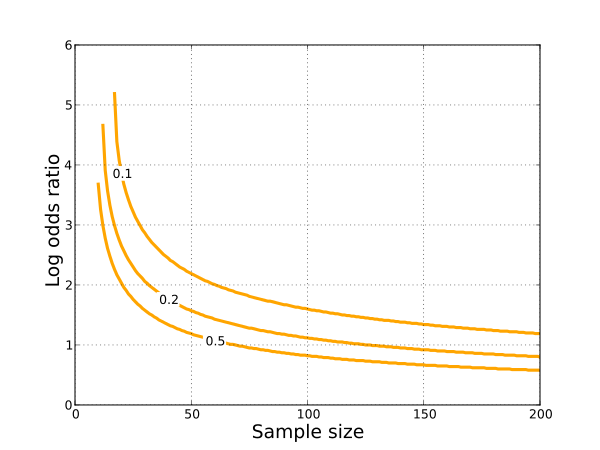



Odds Ratio Wikiwand
We can easily transform log odds into odds ratios by exponentiating the coefficients (b coeffcient= 0477)1 The logistic regression coefficient indicates how the LOG of the odds ratio changes with a 1unit change in the explanatory variable;Odds ratios and logistic regression When a logistic regression is calculated, the regression coefficient (b1) is the estimated increase in the log odds of the outcome per unit increase in the value of the exposure In other words, the exponential function of the regression coefficient (e b1) is the odds ratio associated with a oneunit increase in the exposure




Ppt 0 5 Powerpoint Presentation Free Download Id



Odds
However,log odds do not provide an intuitively meaningful scale to interpret the change in the outcome variable Taking the exponent of the log odds allows interpretation of the coefficients in terms of Odds Ratios (OR) which are substantive to interpret;Logistic Regression and Odds Ratio A Chang 1 Odds Ratio Review Let p1 be the probability of success in row 1 (probability of Brain Tumor in row 1) 1 − p1 is the probability of not success in row 1 (probability of no Brain Tumor in row 1) Odd of getting disease for the people who were exposed to the risk factor ( pˆ1 is an estimate of p1) O = Let p0 be the probability of success in row 2Log Odds and Odds Calculator In statistics, odds, log odds and expected proportion are three different ways of expressing probabilities, which are related to each other You can find out the value of one of these by knowing the value of any two Here is the free online Log odds and odds calculator for calculation of log odds, odds or expected




Log Odds Ratios From Snp Drug Resistance Associations Are A Potential Download Scientific Diagram



Forest Plot Of The Log Of The Odds Ratio And Its 95 Confidence Download Scientific Diagram
Are converted easily into odds ratios because logistic regression estimatesaparameter,knownasthelogodds,whichisthenatural logarithmoftheoddsratioForexample,ifalogoddsestimatedby logistic regression is 04 then the odds ratio can be derived by exponentiating the log odds (exp(04) = 15) It is the odds ratioOdds ratios and logistic regression When a logistic regression is calculated, the regression coefficient (b1) is the estimated increase in the log odds of the outcome per unit increase in the value of the exposureInstead, any estimated odds ratio is conditional on the data and the model specification Odds ratios should not be compared across different studies using different samples from different populations




Odds Ratios And Log Odds Ratios Clearly Explained Youtube




Funnel Plot Of Standard Error By Log Odds Ratio For Assessing Download Scientific Diagram
The odds are 245/(1245) = 3245 and the log of the odds (logit) is log(3245) = In other words, the intercept from the model with no predictor variables is the estimated log odds of being in honors class for the whole population of interestFor pediatric arrest, the risk of survival if intubated during arrest was 411/1135 (36%) vs 460/1135 (41%) if not intubated Let's convert to odds and calculate an OR Intubated 411/ = 411/724 = 057 odds Nonintubated 460/ = 460/675 = 068 oddsThe odds ratio is always positive, and an odds ratio of 1 means that the odds of the event occurring in the two groups is the same When plotting an odds ratio, the relevant fact is that it is a ratio A ratio is not symmetric, and reversing the comparison group results in




Log Odds Ratio




Odds Ratios And Log Odds Ratios Clearly Explained Youtube
For all 've' values of x, log x can vary between ∞ to ∞ So far we have understood odds Let's describe Odds ratio, which as the name suggests, is the ratio of oddsConsidering the example above, Odds ratio, represents which group (male/female) has better odds of success, and it's given by calculating the ratio of odds for each group1 Log Odds Ratio Log odds ratio is a statistical tool to find out the probability of happening one event out of 2 events In our case, its finding out which words are more or less likely to come from each book Here n is number of times that word is used by each scientist and total is total words by each one of them1 $\begingroup$yes, the log odds ratio is the logarithm of the odds ratio, wich is $\beta_1$ If you take the exponential of the logarithm of the odds ratio, then you end up with the odds ratio The log odds is not$\beta_1$, but $\beta_0 \beta_1 x_1 \cdots \beta_k x_k = \ln(\frac{p}{1p})$
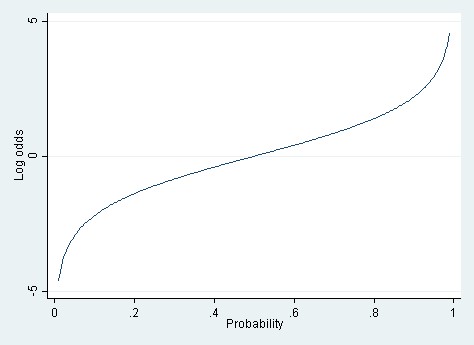



Linear Vs Logistic Probability Models Which Is Better And When Statistical Horizons
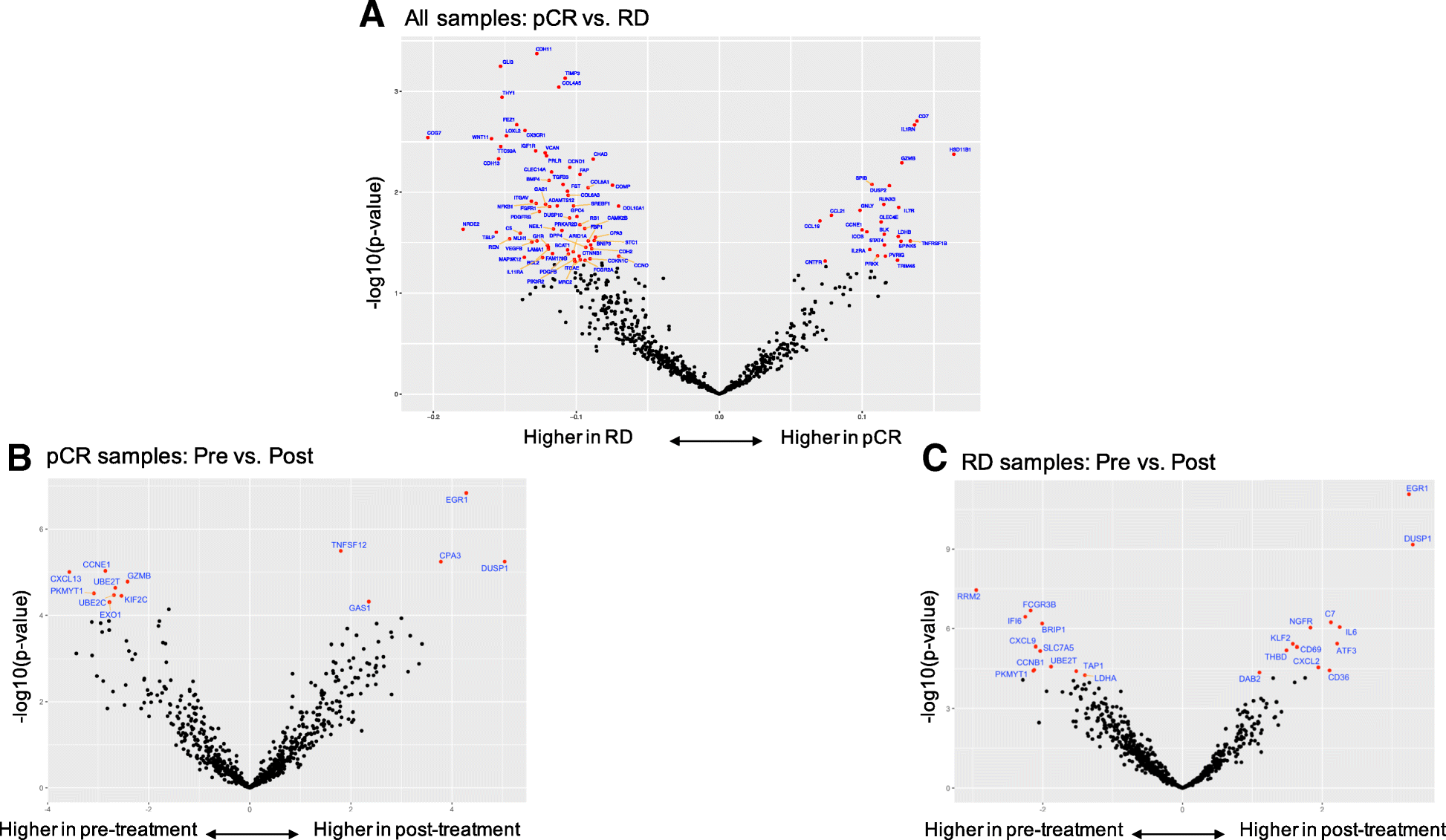



Immune Profiling Of Pre And Post Treatment Breast Cancer Tissues From The Swog S0800 Neoadjuvant Trial Journal For Immunotherapy Of Cancer Full Text
Odds and Log Odds admin 0 Comments odd , log odd , odd and log odd In the previous tutorial , you understood about logistic regression and the best fit sigmoid curveThis StatQuest covers those subjects so that you can understand the statiThis is not the same as the change in the (unlogged) odds ratio though the 2 are close when the coefficient is small 2 Your use of the term "likelihood" is quite confusing
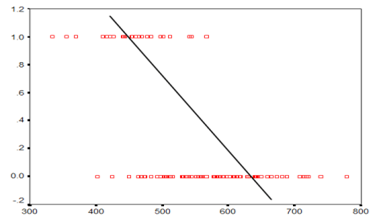



Logistic Regression Understanding Odds And Log Odds By Shruti Wagh Wicds Medium




9 2 Binary Logistic Regression R For Health Data Science
The odds ratio An odds ratio (OR) is a measure of association between an exposure and an outcome In a casecontrol study you can compare the odds that those with a disease will have been exposed to the risk factor, with the odds that those who don't have the disease or condition will have been exposedThe logarithm of the odds ratio, the difference of the logits of the probabilities, tempers this effect, and also makes the measure symmetric with respect to the ordering of groups For example, using natural logarithms, an odds ratio of 27/1 maps to 3296,1 indicates a heightened probability of the outcome in the treatment group The two metrics track each other, but are not equal




Strategies For Graphing Distributions Of Log Odds Estimates And The Corresponding Odds Ratios Cross Validated




Into The Logistic Regression Towards Ai The World S Leading Ai And Technology Publication
Englishwise, they are correct it is the odds and the odds are based on a ratio calculation It is not, however, the odds ratio that is talked about when results are reported The odds ratio when results are reported refers to the ratio of two odds or, if you prefer, the ratio of two odds ratios That is, let us write o(Xb) = exp(Xb)The odds aren't as odd as you might think, and the log of the odds is even simpler!The log odds are modeled as a linear combinations of the predictors and regression coefficients β0 β1xi β 0 β 1 x i The complete model looks like this Logit = ln( p(x) 1−p(x)) =β0 β1xi L o g i t = l n ( p ( x) 1 − p ( x)) = β 0 β 1 x i This equation shows, that the linear combination models the Logit and model coefficients




The Odds Ratio Calculation Usage And Interpretation Biochemia Medica




Odds Ratio The Odds Ratio Is Used To Find The By Analyttica Datalab Medium
The odds ratio is used when one of two possible events or outcomes are measured, and there is a supposed causative factor The odds ratio is a versatile and robust statistic For example, it can calculate the odds of an event happening given a particular treatment intervention (1)I see a lot of researchers get stuck when learning logistic regression because they are not used to thinking of likelihood on an odds scale Equal odds are 1 1 success for every 1 failure 11 Equal probabilities are 5 1 success for every 2 trials Odds can range from 0 to infinity Odds greater than 1 indicates success is more likely thanSometimes, we see the log odds ratio instead of the odds ratio The log OR comparing women to men is log(144) = 036 The log OR comparing men to women is log(069) = 036 log OR >



1
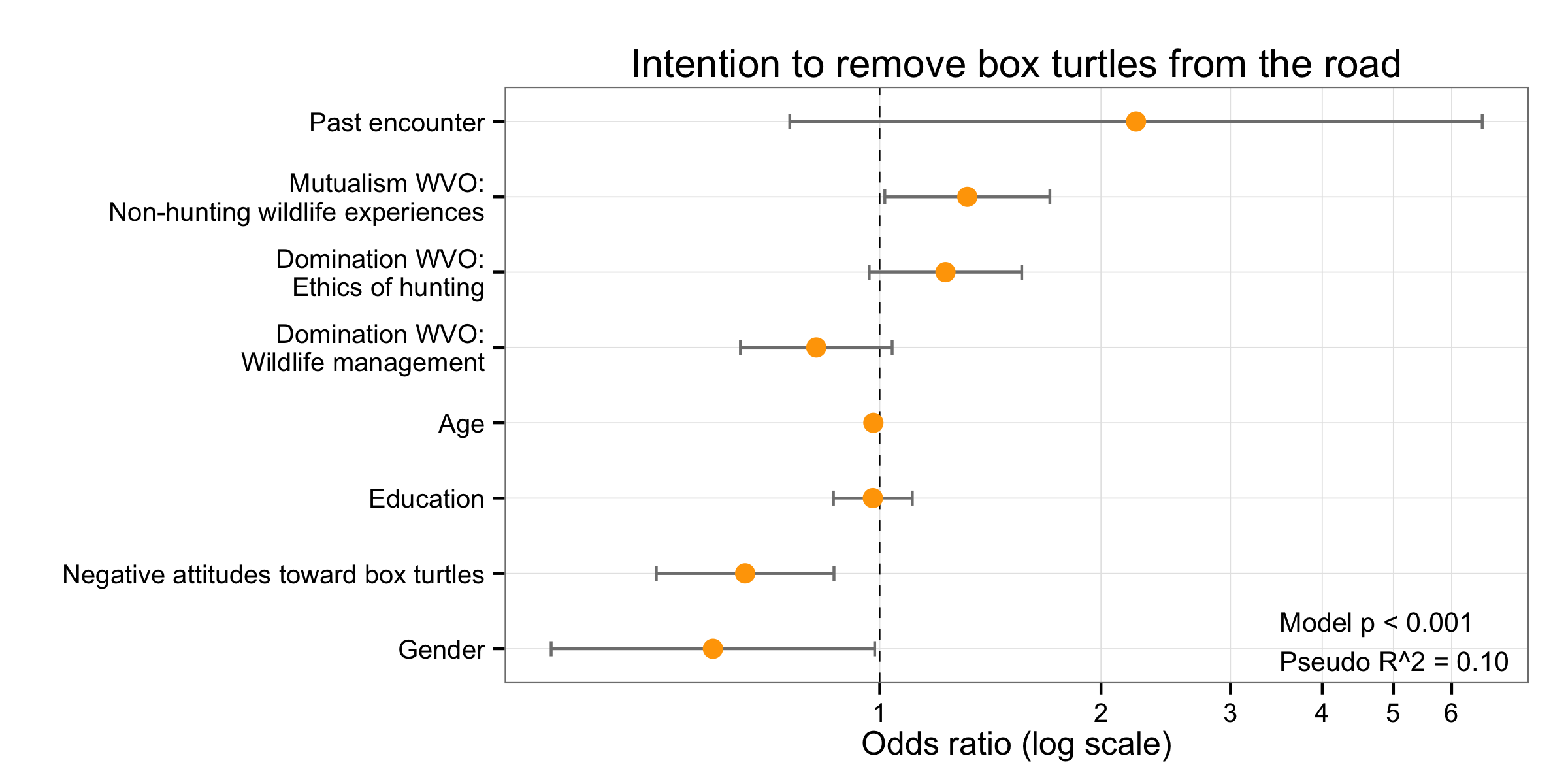



Visualizing Odds Ratios J Stuart Carlton
321 Log odds ratio First, the log odds of word w w in document i i is defined as logOi w = log fi w 1−fi w log O w i = log f w i 1 − f w i Logging the odds ratio provides a measure that is symmetric when comparing the usage of word w w across different documents Log odds ratio of word w w between document i i and j j isThe risk or odds ratio is the risk or odds in the exposed group divided by the risk or odds in the control group A risk or odds ratio = 1 indicates no difference between the groups A risk or odds ratio >Odds ratio is the likelihood that an event will occur in relation to the likelihood that an event will not occur, 1 event for and 5 events against In Gambling, the odds are a ratio of the likelihood of a certain outcome, related to the other outcomes I had to look this up, because I forgot this part of finite math, from 25 years ago




13 5 Odds Ratio Plot R For Health Data Science
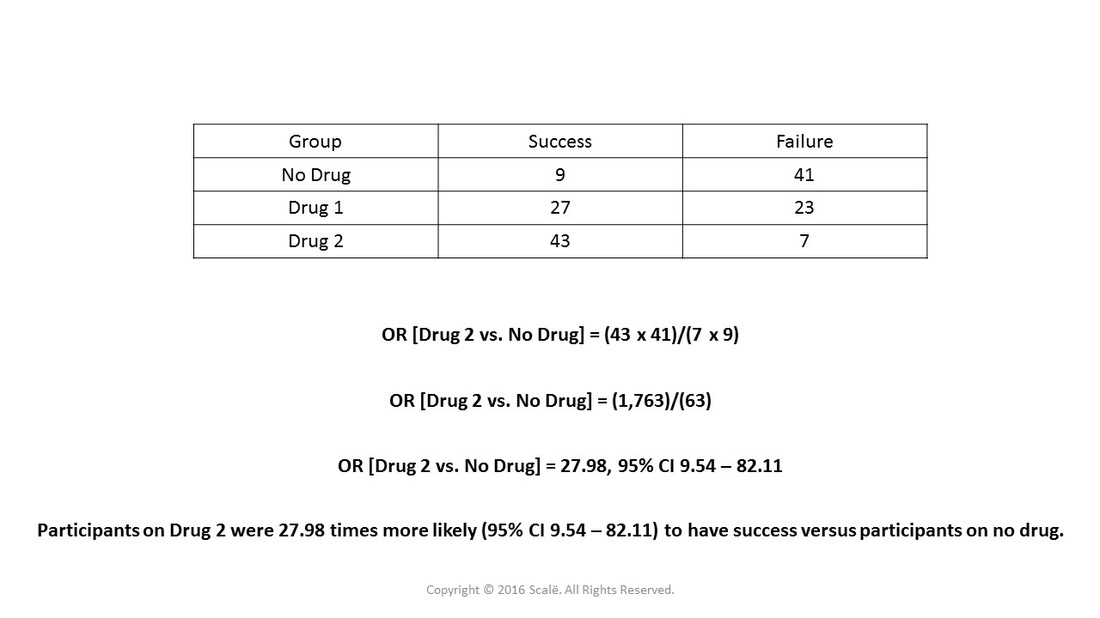



Use And Interpret Unadjusted Odds Ratio In Spss
Frequency Vs Log Odds Ratio For Each Word Positive Odds Ratios Download Scientific Diagram 1 Logit Model Faq How Do I Interpret Odds Ratios In Logistic Regression Plotting Odds Ratio S And 95 Confidence Intervals Stack Overflow Statistics Sunday Everyone Loves A Log Odds Ratio Deeply TrivialLog_odds = seq(from =5,to =5,by =025) odds = exp(log_odds) # use 'plogis' function to calculate exp(x)/(1 exp(x)) p = plogis(log_odds) # use odds/(1odds) to calculate p a different way p2 =odds/(1odds) # store probability of failure (1p) q =1p # store log_odds and y in data frame for use with ggplot 10 decreased risk Odds Ratio 0 5 10 15 More on the Odds Ratio Log Odds Ratio4 2 0 2 4




For The Following Two Way Table Test The Research Chegg Com
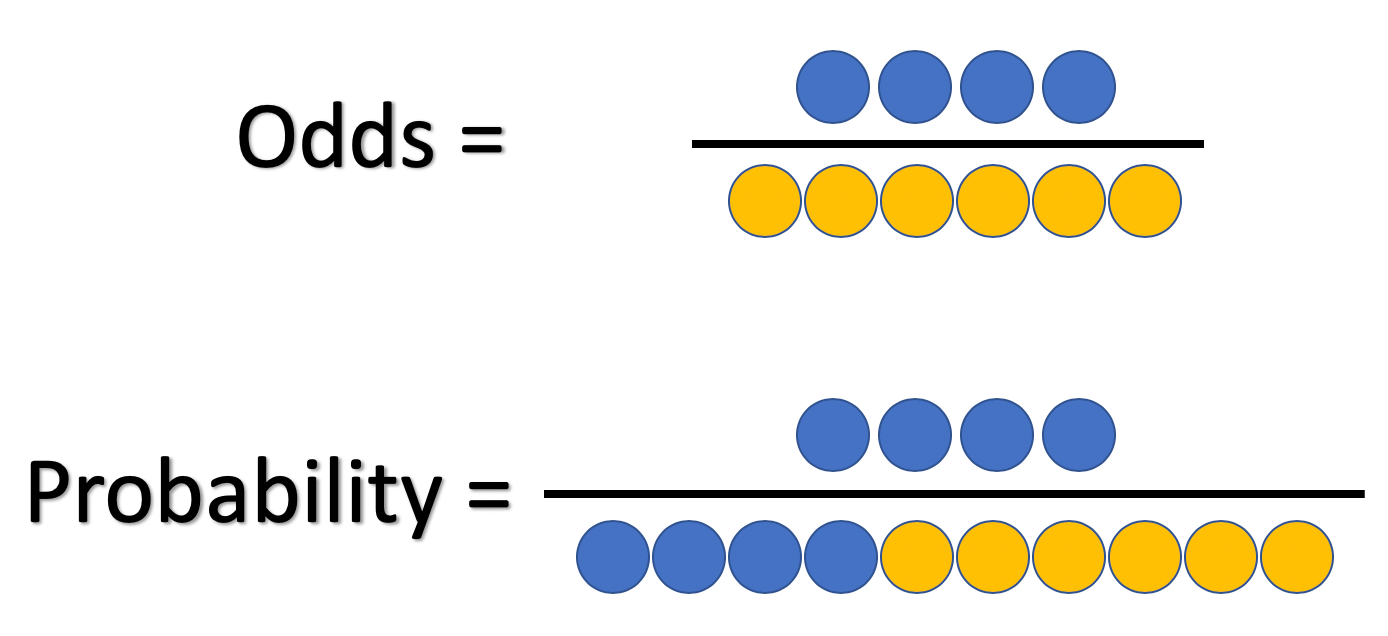



What And Why Of Log Odds What Are Log Odds And Why Are They By Piyush Agarwal Towards Data Science
Odds ratios (OR) are commonly reported in the medical literature as the measure of association between exposure and outcome However, it is relative risk that people more intuitively understand as a measure of association Relative risk can be directly determined in a cohort study by calculating a risk ratio (RR)The odds ratio is the ratio of two odds ODDS RATIO Odds Ratio = Odds of Event A / Odds of Event B For example, we could calculate the odds ratio between picking a red ball and a green ball The probability of picking a red ball is 4/5 = 08 The odds of picking a red ball are (08) / 1(08) = 08 / 02 = 4 The odds ratio for picking a redThe odds ratio for the value of the intercept is the odds of a success (in your data, this is the odds of taking the product) when x = 0 (ie zero thoughts) The odds ratio for your coefficient is the increase in odds above this value of the intercept when you add one whole x




Odds Ratio Visualization Tidyverse Rstudio Community



1
We also discuss alternatives to odds ratios Principal Findings There is no single odds ratio;216 Odds ratios and logistic regression ln(OR)=ln(356) = −1032SEln(OR)= 1 26 1 318 1 134 1 584 = 95%CI for the ln(OR)=−1032±196×2253 = (−1474,−590)Taking the antilog, we get the 95% confidence interval for the odds ratio 95%CI for OR=(e−1474,e−590)=(229,554) As the investigation expands to include other covariates, three popular approachesThe odds of an event represent the ratio of the (probability that the event will occur) / (probability that the event will not occur) This could be expressed as follows Odds of event = Y / (1Y) So, in this example, if the probability of the event occurring = 080, then the odds are 080 / (1080) = 080/0 = 4 (ie, 4 to 1) If a race horse runs 100 races and wins 25 times and loses
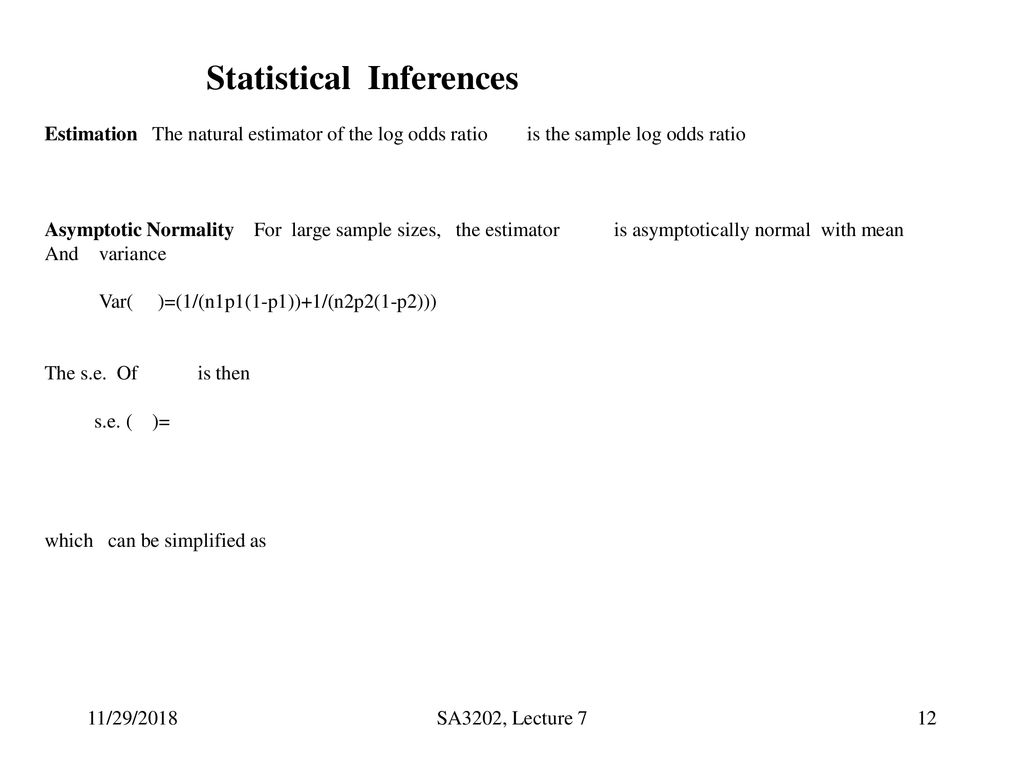



Lecture 7 The Odds Log Odds Ratios Ppt Download




Top Pdf Log Odds Ratio 1library
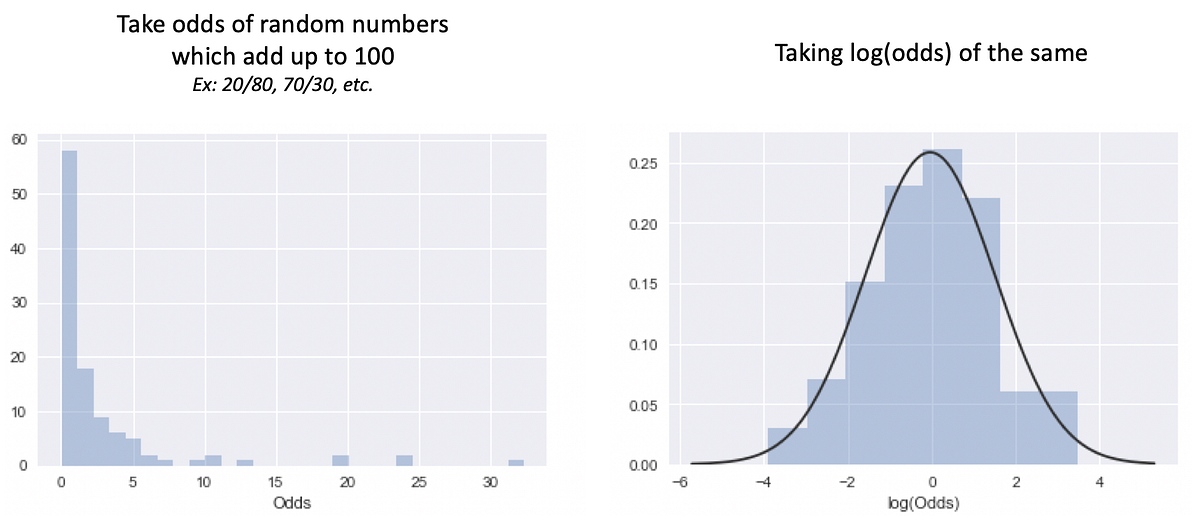



What And Why Of Log Odds What Are Log Odds And Why Are They By Piyush Agarwal Towards Data Science




Strategies For Graphing Distributions Of Log Odds Estimates And The Corresponding Odds Ratios Modeling The Stan Forums




Distribution Of The Log Odds Ratio S In Folded Unfolded And Download Scientific Diagram




A Funnel Plot Of Log Odds Ratio Against Sample Size Download Scientific Diagram




April 4 Logistic Regression Lee Chapter 9 Cody
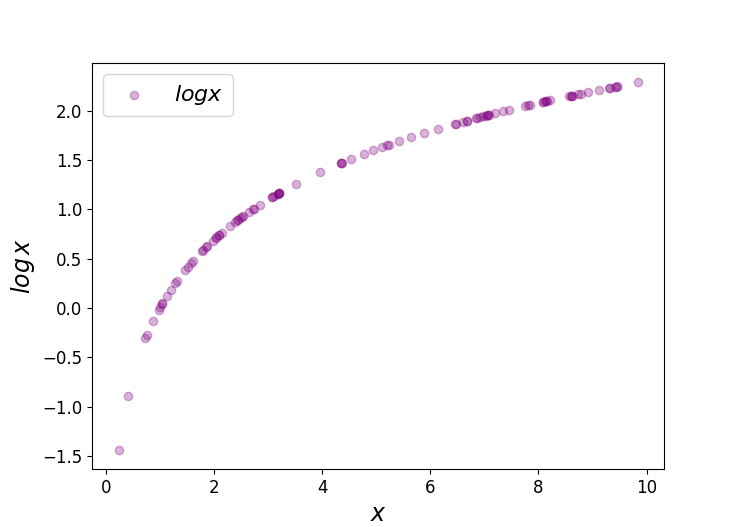



Logit Of Logistic Regression Understanding The Fundamentals By Saptashwa Bhattacharyya Towards Data Science




Frequency Vs Log Odds Ratio For Each Word Positive Odds Ratios Download Scientific Diagram



Odds Ratios Need To Be Graphed On Log Scales Andrew Wheeler



Plos One Statistical Learning For Turboshaft Helicopter Accidents Using Logistic Regression
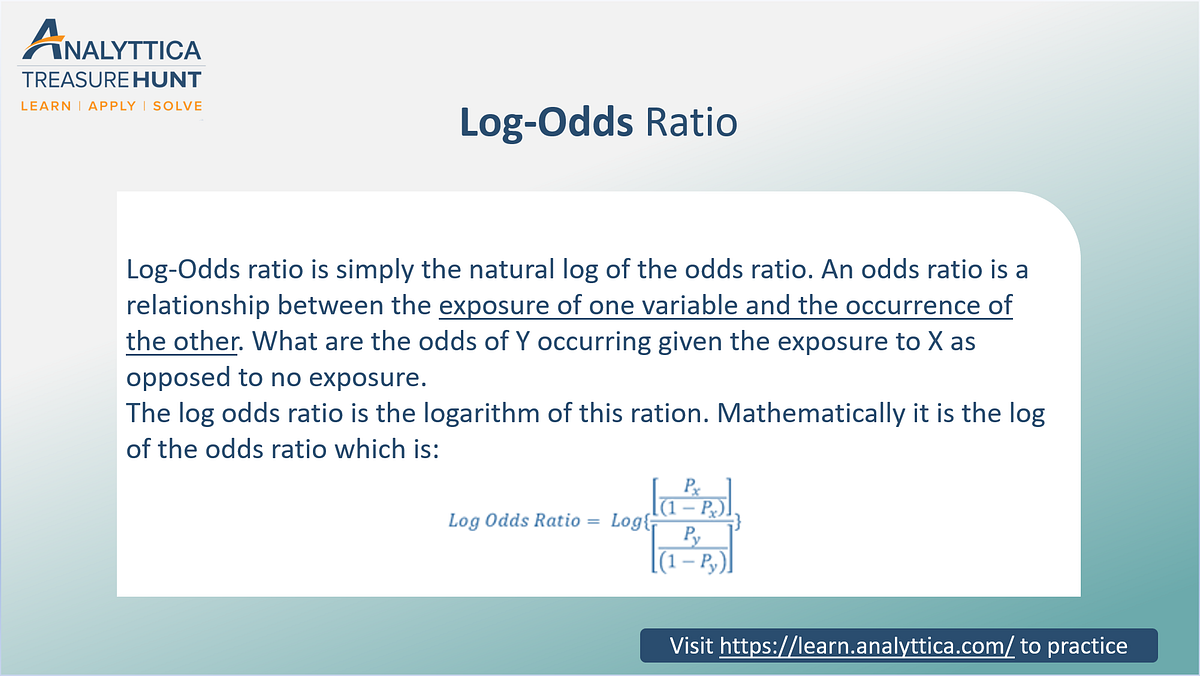



Log Odds Ratio Analytics Function Series By Analyttica Datalab Medium




Log Odds Ratio Plot Of Tnt Vs Diagnoses Download Scientific Diagram




Simple Way To Visualise Odds Ratios In R Stack Overflow




Much Ado About Nothing Logit Vs Probit Stata Output Log Odds Vs Odds Ratio
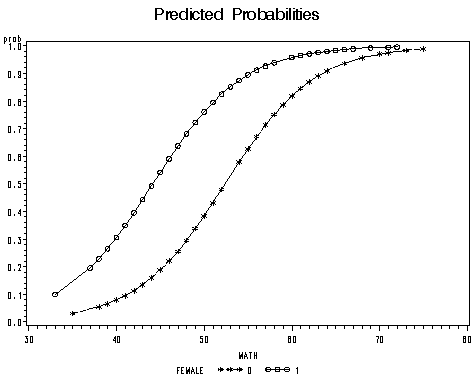



Proc Logistic And Logistic Regression Models




Statistics Sunday Everyone Loves A Log Odds Ratio Deeply Trivial
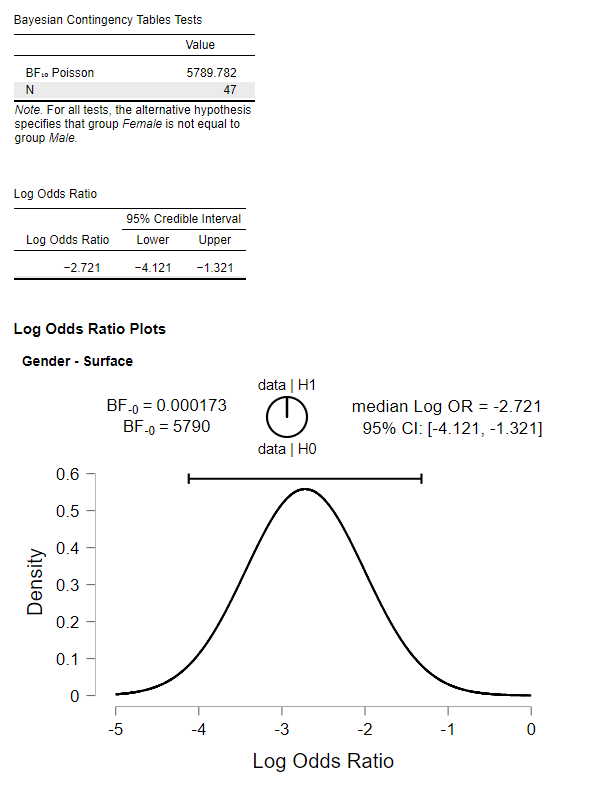



Log Odds Ratio Plots Not Correct Issue 595 Jasp Stats Jasp Issues Github




R Calculate And Interpret Odds Ratio In Logistic Regression Newbedev
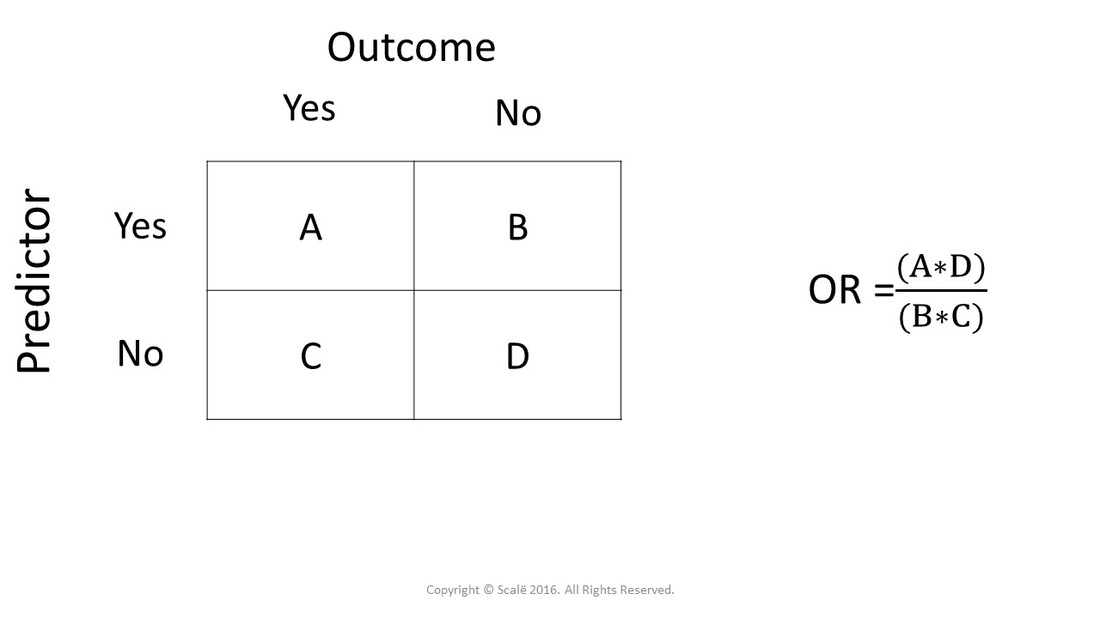



Calculate Odds Ratio With 95 Confidence Intervals




View Image




Diagnostic Odds Ratio Wikipedia




Forest Plot Of Log Odds Ratios For Paresthesia Topiramate 0 Mg Vs Download Scientific Diagram




What Are The Odds That You Know About The Odds Analytics Vidhya




Logistic Regression Why Sigmoid Function




How Do I Interpret Odds Ratios In Logistic Regression Spss Faq




Relative Bias Against Log Odds Ratio For The Chapman And Chao Estimators Download Scientific Diagram



Jstor Org




Pdf The Relative Merits Of Risk Ratios And Odds Ratios Semantic Scholar




Odds Ratio Wikipedia




Logistic Regression Binary Dependent Variable Pass Fail Odds Ratio P 1 P Eg 1 9 Means 1 Time In 10 Pass 9 Times Fail Log Odds Ratio Y Ln P 1 P Ppt Download




What Is An Odds Ratio And How Do I Interpret It Critical Appraisal




How To Get Odds Ratio In Ordinal Logistic Regression Jmp User Community




Interpreting Mlogit Coefficients In R Odds Ratios And Negative Coefficients Cross Validated
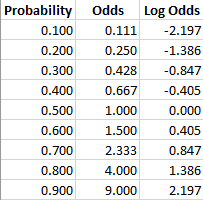



Log Odds Definition And Worked Statistics Problems




Odds Ratios Need To Be Graphed On Log Scales Andrew Wheeler




What And Why Of Log Odds What Are Log Odds And Why Are They By Piyush Agarwal Towards Data Science




Iv Multiple Logistic Regression V Extend Simple Logistic




9 2 Binary Logistic Regression R For Health Data Science




What And Why Of Log Odds What Are Log Odds And Why Are They By Piyush Agarwal Towards Data Science




How To Show Odds Ratio Instead Of Log Odds In Bplot From Lrm Model Rms Package Stack Overflow




Odds Ratios Are Far From Portable A Call To Use Realistic Models For Effect Variation In Meta Analysis Journal Of Clinical Epidemiology



Plos One Elucidating The Foundations Of Statistical Inference With 2 X 2 Tables




Log Odds Ratios For Predicting Allocations To Distant Co Religionists Download Table




2 Regression Results Logit Specification Log Odds Ratio Download Table




Histogram Showing The Distribution Of The Log Odds Ratios Ors Of The Download Scientific Diagram




What And Why Of Log Odds What Are Log Odds And Why Are They By Piyush Agarwal Towards Data Science



Log Odds




Introducing Tidylo Julia Silge




Iv Multiple Logistic Regression V Extend Simple Logistic



Logit Wikipedia



Relative Risk Ratios And Odds Ratios
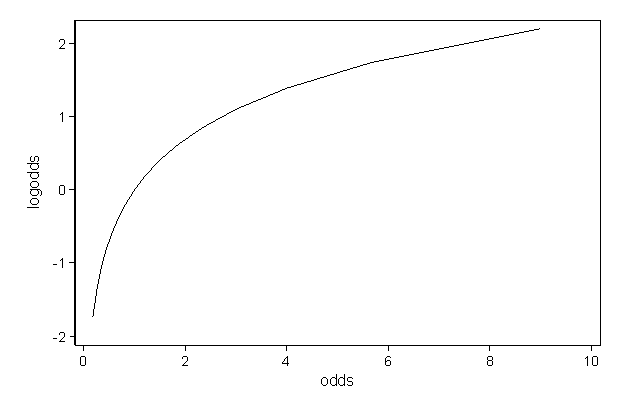



Faq How Do I Interpret Odds Ratios In Logistic Regression
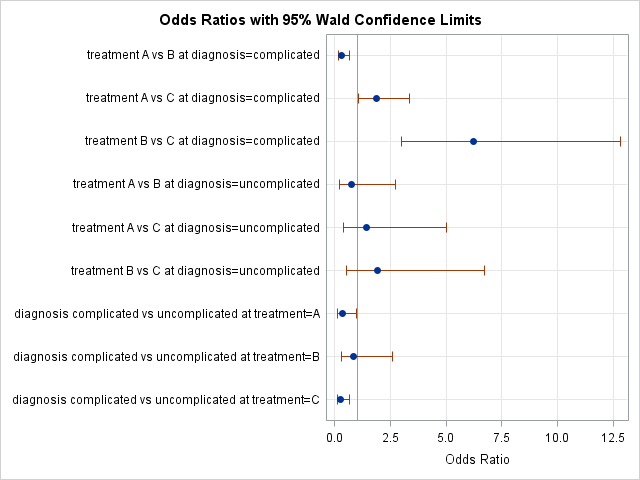



Odds Ratio Plots With A Logarithmic Scale In Sas The Do Loop




Statistical Analysis Sc504 Hs927 Spring Term Ppt Video Online Download
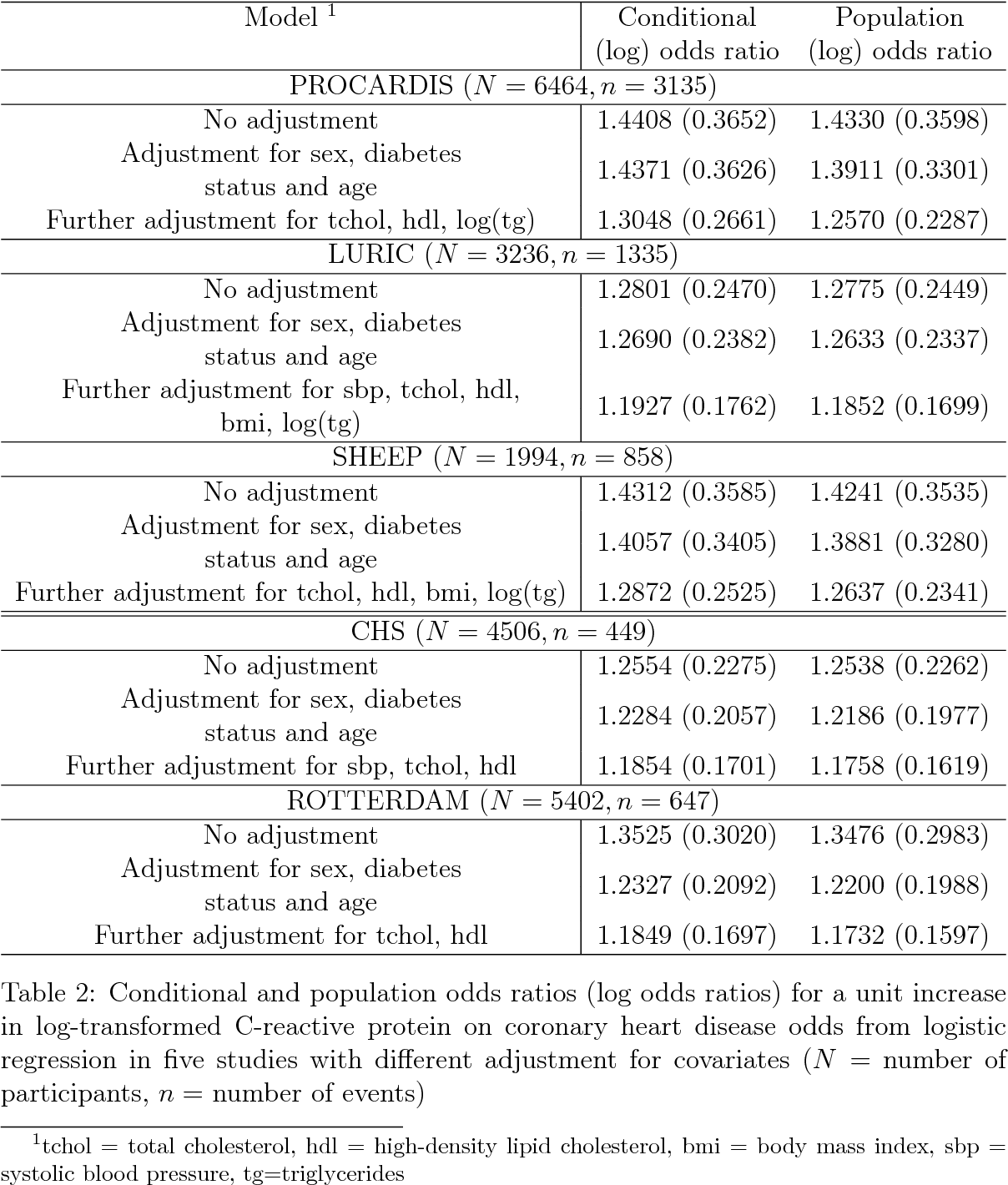



Table 2 From Identifying The Odds Ratio Estimated By A Two Stage Instrumental Variable Analysis With A Logistic Regression Model Semantic Scholar




Top Pdf Log Odds Ratio 1library




Funnel Plots Comparing Log Odds Ratio Or Versus The Standard Error Of Download Scientific Diagram




Plotting Odds Ratio Vs Continuous Variable In Stata Stack Overflow




Lecture 7 The Odds Log Odds Ratios Ppt Download




Logit Wikipedia




Epos Trade




Natural Log Odds Ratio In Excel Top Tip Bio




Clinical Trials In Hours Point Estimation Odds




Proportions Chi Squared Tests And Odds Ratios
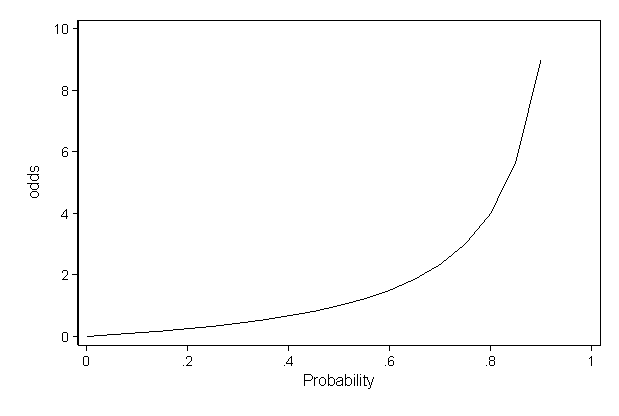



Faq How Do I Interpret Odds Ratios In Logistic Regression
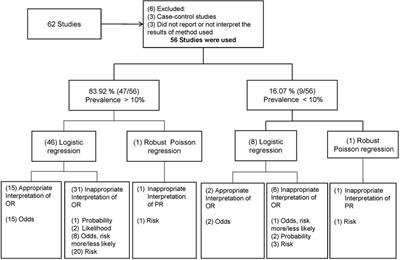



Frontiers Odds Ratio Or Prevalence Ratio An Overview Of Reported Statistical Methods And Appropriateness Of Interpretations In Cross Sectional Studies With Dichotomous Outcomes In Veterinary Medicine Veterinary Science




Log Odds Interpretation Of Logistic Regression Youtube




What And Why Of Log Odds What Are Log Odds And Why Are They By Piyush Agarwal Towards Data Science




Odds Ratio Wikiwand



Rinterested Github Io




Odds And Log Odds Clearly Explained Youtube




Identifying The Odds Ratio Estimated By A Two Stage Instrumental Variable Analysis With A Logistic Regression Model Abstract Europe Pmc




Solved 14 For The Following Two Way Table Test The Chegg Com




Lorelograms Estimated Mean Log Odds Ratio As A Function Of Lag Time Download Scientific Diagram




Volcano Plot Depicting Log Odds Ratios And P Values Of The Download Scientific Diagram
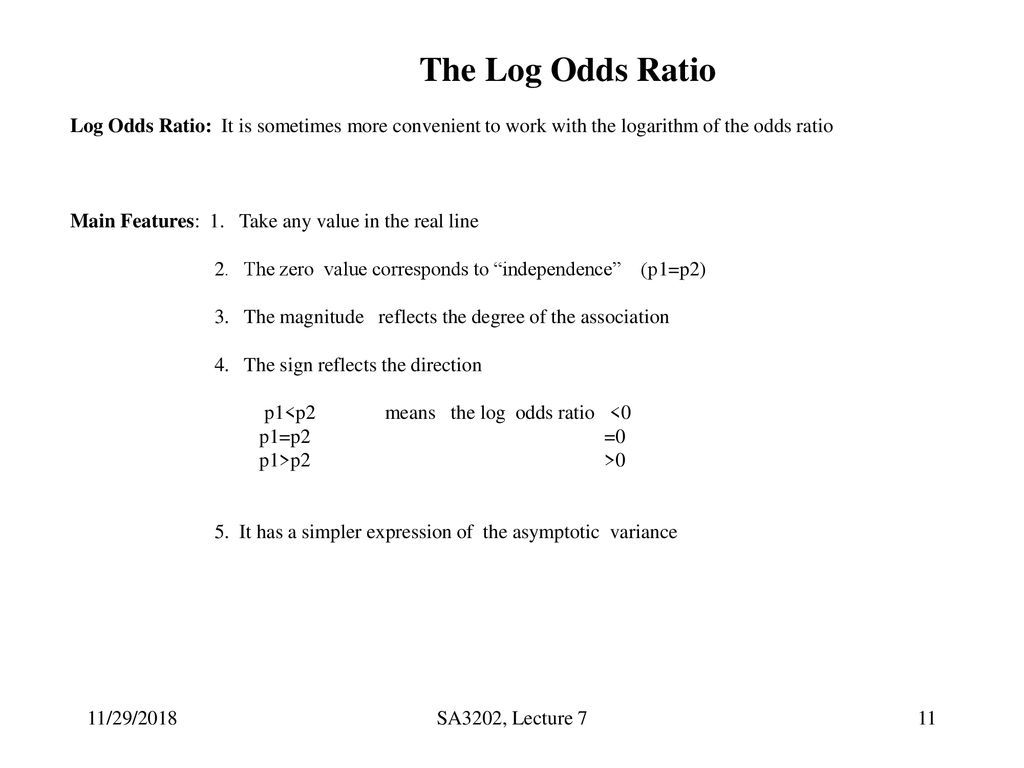



Lecture 7 The Odds Log Odds Ratios Ppt Download




Modeling Likert Scale Outcomes With Trend Proportional Odds With And Without Cluster Data Methodology



0 件のコメント:
コメントを投稿